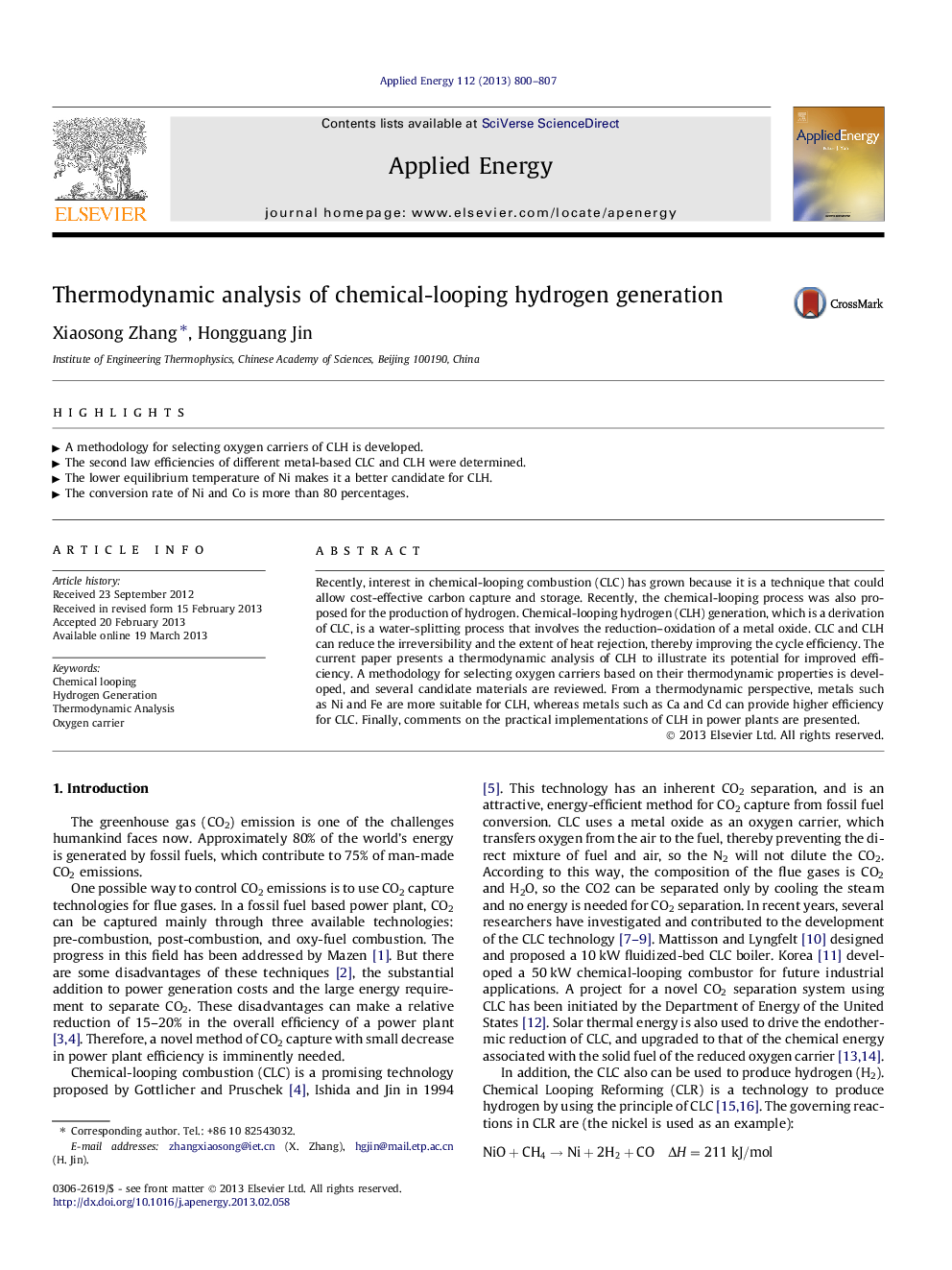| Article ID | Journal | Published Year | Pages | File Type |
|---|---|---|---|---|
| 242960 | Applied Energy | 2013 | 8 Pages |
Recently, interest in chemical-looping combustion (CLC) has grown because it is a technique that could allow cost-effective carbon capture and storage. Recently, the chemical-looping process was also proposed for the production of hydrogen. Chemical-looping hydrogen (CLH) generation, which is a derivation of CLC, is a water-splitting process that involves the reduction–oxidation of a metal oxide. CLC and CLH can reduce the irreversibility and the extent of heat rejection, thereby improving the cycle efficiency. The current paper presents a thermodynamic analysis of CLH to illustrate its potential for improved efficiency. A methodology for selecting oxygen carriers based on their thermodynamic properties is developed, and several candidate materials are reviewed. From a thermodynamic perspective, metals such as Ni and Fe are more suitable for CLH, whereas metals such as Ca and Cd can provide higher efficiency for CLC. Finally, comments on the practical implementations of CLH in power plants are presented.
► A methodology for selecting oxygen carriers of CLH is developed. ► The second law efficiencies of different metal-based CLC and CLH were determined. ► The lower equilibrium temperature of Ni makes it a better candidate for CLH. ► The conversion rate of Ni and Co is more than 80 percentages.
